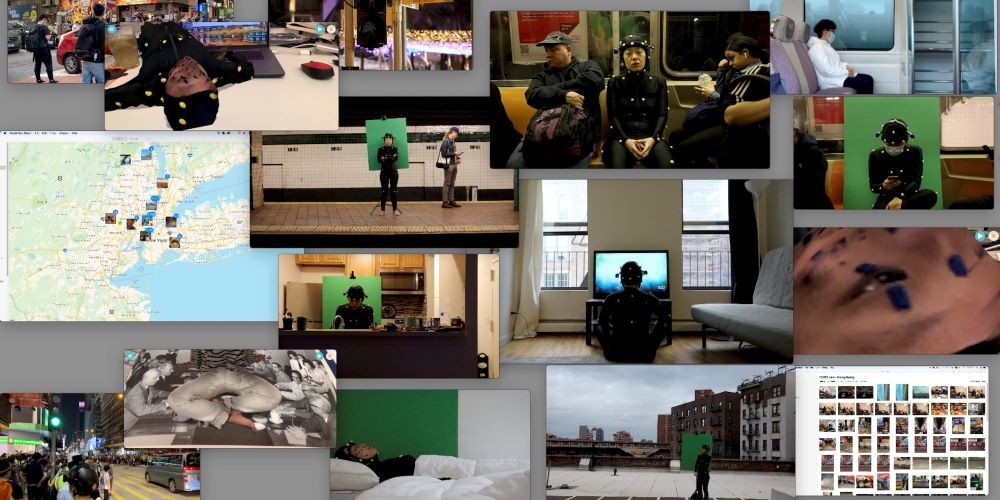Uncovering the Heritage Silhouette: Lau Wai '20
Uncovering the Heritage Silhouette is a bi-weekly series diving into how tradition influences the creation of art. We interview artists heavily influenced by their heritage.
Lau Wai is a student at Columbia University School of the Arts in the Visual Arts program. She lives and works between New York and Hong Kong. Her work utilizes photography, video, drawing and installation exploring the multilateral constructions of identity in relation to race, gender and the notion of belonging. She attempts to investigate how history, fiction, memory and virtuality collided in the process of identity formation through personal and historical archives, cinematic imagery, popular culture and digital media.
A few recent exhibitions she’s participated in are 2020 Yokohama Triennale (Japan), Diagonal, Magician Space (Beijing, China), and Museum of Half Truths, 1a Space (Hong Kong).
You were supposed to graduate this year, but your thesis exhibition got postponed because of the pandemic. Where are you situated now?
Lau Wai: Hong Kong. Actually I came originally just for Spring Break in March but the US started having their outbreak once I arrived and so my return trip got cancelled. Luckily enough, I have a friend in New York who helped me store my stuff from my place and the school helped me move my belongings from my studio.
That’s good to hear. I wanted to start this conversation by asking you something that could be an easy or not-so-easy question, how would you define cultural heritage?
LW: Wow. I might have to sit with this one a bit. I sort of just want to use my works to elaborate on that. Some of my earlier works I would say were in search of my own cultural heritage at certain levels. At that point I was looking for my parents’ identities, mine as well, in relation to regional aspects.
Let’s talk about your work. Starting with your earlier series 'here & album.' How did you start this series?
LW: Initially I thought to explore visual language contained in family albums. That was a really long process, and I’m still not even done. All the albums are from my grandad. He was a photographer and he maintained an archive of photos from the 1930s to around 2007. He kept 13 medium sized boxes of albums, and I happened to get a hold of the photos. This originally was an assignment from my mom and uncle to create a digital archive for my family, but the mission is still going. I’m only half way done! But the project itself inspired me a lot because my parents and I started speaking about topics we had never discussed before, particularly about their past. It was interesting to me because they had forgotten a lot of those memories. That was one large part of this project, cropping the photos to show how memory functions, as fragmental.
For this project, I shot my first photographs in 2012. I had never taken photos of my family nor home. I found a new purpose, which was to document the history of our home. I wanted to use the camera to focus on the still, precise moments of my subjects, my parents.
I even went back to their hometowns, and over the course of around three years I explored their old homes, schools, work places, and all the memorable places they would talk to me about. It was after this that I started thinking about how I could incorporate the family albums together with my own photos. This was my way of narrating my family’s history.
Can I get a brief background of your family’s history and their immigration to Hong Kong?
LW: My parents are both from Northern China. My dad is from Tianjin and my mom mostly Beijing, but all Northern China. Both of my grandparents from both sides had immigrated to Hong Kong much easier than my parents, around the post-war period around 1945 to the 1960s. My parents moved over in the late seventies and reunited with their parents. Then they met in Hong Kong, had me, my brother, and here we are now!
Image Carousel with 8 slides
A carousel is a rotating set of images. Use the previous and next buttons to change the displayed slide
-
Slide 1: work from 'here & album' by Lau Wai
-
Slide 2: work from 'here & album' by Lau Wai
-
Slide 3: work from 'here & album' by Lau Wai
-
Slide 4: work from 'here & album' by Lau Wai
-
Slide 5: work from 'here & album' by Lau Wai
-
Slide 6: work from 'here & album' by Lau Wai
-
Slide 7: work from 'here & album' by Lau Wai
-
Slide 8: work from 'here & album' by Lau Wai
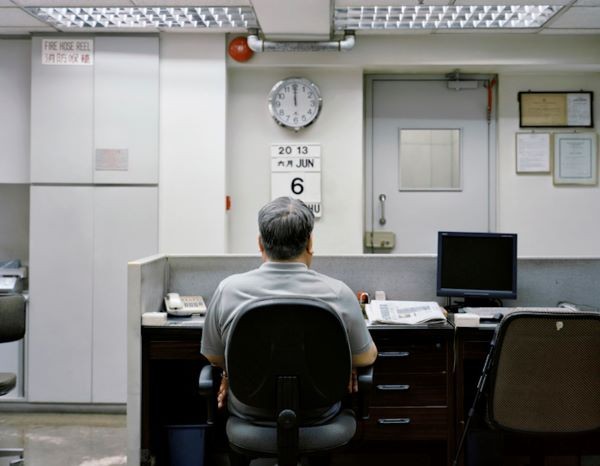
work from 'here & album' by Lau Wai

work from 'here & album' by Lau Wai
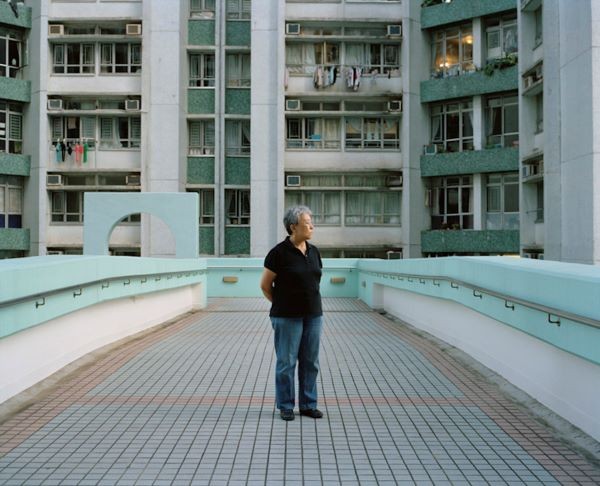
work from 'here & album' by Lau Wai
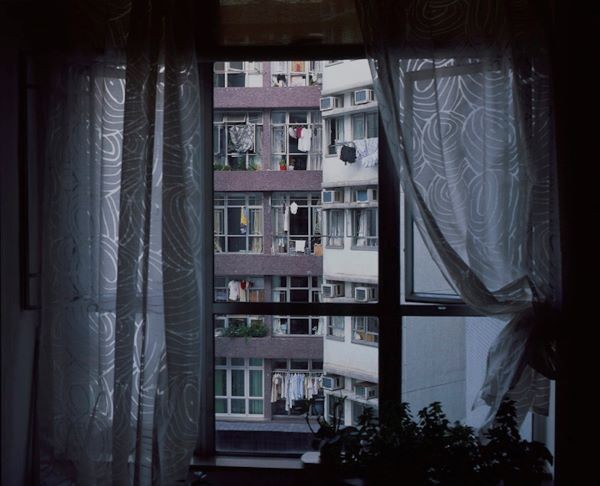
work from 'here & album' by Lau Wai
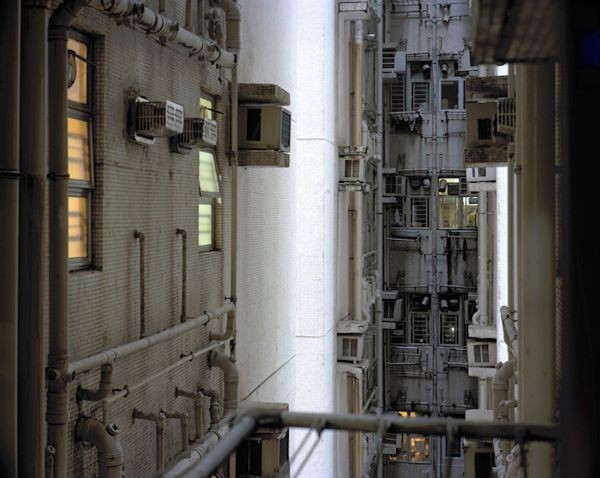
work from 'here & album' by Lau Wai
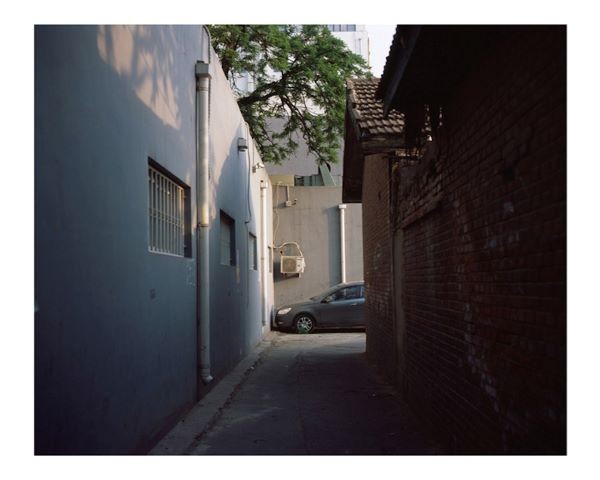
work from 'here & album' by Lau Wai

work from 'here & album' by Lau Wai
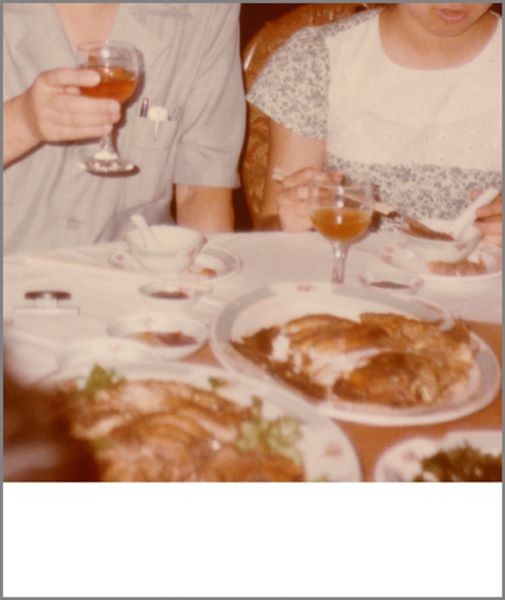
work from 'here & album' by Lau Wai
I love the integration of family photos and essentially memories and/or history into your art. There’s a generational nostalgia throughout your photos. In the series we see memories of your parents and their transition through lands and different rulings. I’m interested in the effect of immigration. Would you say that because of the move, your family belonged to a group of people different than those in Hong Kong? How did your family interact with the community?
LW: Yes. Obviously there is a huge difference. For most of my parents’ lives they lived in a communist society and transitioning to a totally different lifestyle was very tough at first. Both of them moved when they were in their thirties and the new societal difference tied to the political situation. Growing up they lived under a totalitarian society and when they reached the age of twenty the communist party dominated the country. Starting there they had to wear the same uniform, and could not own any property.
This reminds me of something my mom told me when I was young. Soon after moving to Hong Kong she went shopping for some clothes and at the mall the sales lady asked her “What color do you want?” And at that point my mom had an awakening that she already forgot what color she liked. She had one when she was young but since no one asked her that question for so many years, she had forgotten. It was moments like these that made her realize she had to adopt to a new society.
I’m interested in the experience of leaving one’s home country and starting anew. Do you think cultural tradition was lost through the years (generations) and/or immigration?
LW: I think I’m a mixed type. Probably for my parents as well, as they still maintain a lot of Northern Chinese cultural habits, particularly for food. Northern Chinese food is also my favorite type of food, growing up I loved going to 京菜馆 (jīng càiguǎn / Beijing food restaurants).
Is there a tradition that you hope is kept for future generations in your family?
LW: Language-wise definitely. I believe cultural heritage has preserved my retaining of language after immigration. It was very interesting growing up as both my parents spoke Mandarin with heavy northern dialects and my brother and I would speak back to them in Cantonese, thinking that it was all one language.
Image Carousel with 4 slides
A carousel is a rotating set of images. Use the previous and next buttons to change the displayed slide
-
Slide 1: work from 'Walking to Nam Kok Hotel' by Lau Wai
-
Slide 2: work from 'Walking to Nam Kok Hotel' by Lau Wai
-
Slide 3: work from 'Walking to Nam Kok Hotel' by Lau Wai
-
Slide 4: work from 'Walking to Nam Kok Hotel' by Lau Wai
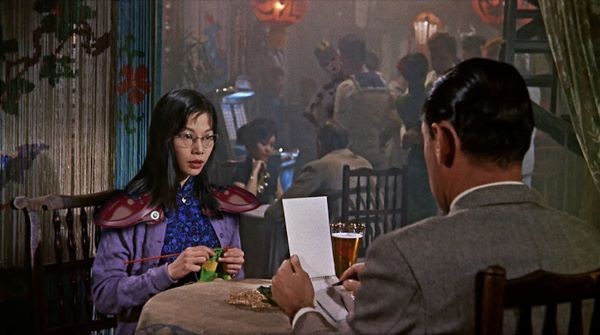
work from 'Walking to Nam Kok Hotel' by Lau Wai
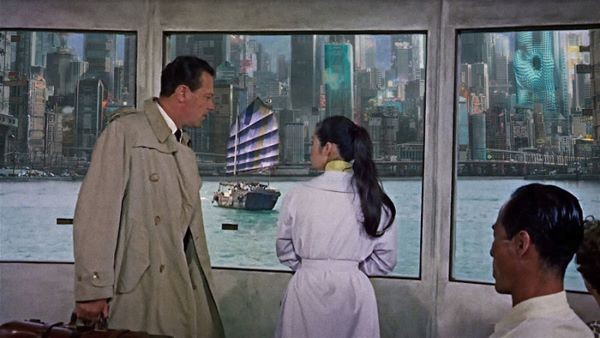
work from 'Walking to Nam Kok Hotel' by Lau Wai
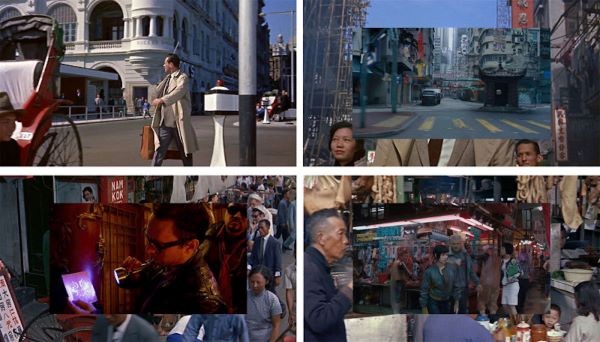
work from 'Walking to Nam Kok Hotel' by Lau Wai
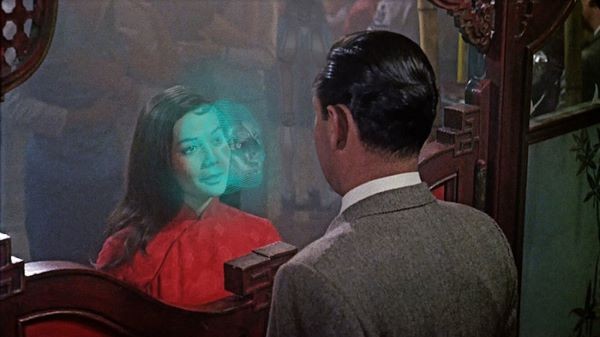
work from 'Walking to Nam Kok Hotel' by Lau Wai
I saw that your work has been displayed in mainland China, Hong kong, other parts of Asia, the U.K, and of course the U.S. Who would say is your ideal audience?
LW: Well, now I don’t have an ideal audience. The reactions and interpretations of my work definitely differ depending on location. In different times in my life, different works, and exhibitions, I have had the chance to face many different audiences. Now I realize that I enjoy that and I’m really open to any audience. I’m interested in these differences and still want to explore.
Moving forward to some of your later works, 'Walking to Nam Kok Hotel' jumps into Hong Kong, Chinese, and/or just Asian culture versus the eurocentric racial stereotypes from the 1950s and forward. How did this project come together?
LW: The earliest trigger for this series was from the History Museum of Hong Kong. There is this timeline section that narrates the development of Hong Kong, but of course only through an authoritarian narration. I always go because I’m interested to see what they put up as “Hong Kong official history” and what they take out. More than often what they choose as “major” has no relation to the people or their experiences in those periods.
Image Carousel with 4 slides
A carousel is a rotating set of images. Use the previous and next buttons to change the displayed slide
-
Slide 1: work from 'I am invincible….on the screen/False motion tracking' by Lau Wai
-
Slide 2: work from 'I am invincible….on the screen/False motion tracking' by Lau Wai
-
Slide 3: work from 'I am invincible….on the screen/False motion tracking' by Lau Wai
-
Slide 4: work from 'I am invincible….on the screen/False motion tracking' by Lau Wai

work from 'I am invincible….on the screen/False motion tracking' by Lau Wai

work from 'I am invincible….on the screen/False motion tracking' by Lau Wai

work from 'I am invincible….on the screen/False motion tracking' by Lau Wai

work from 'I am invincible….on the screen/False motion tracking' by Lau Wai
When I walked towards the 1960 section they mentioned “The World of Suzie Wong,” and the tourist boom it brought, from the Western World. This is the earliest film I refer to in my series and to my surprise is a very popular film. It was fascinating because the movie is fiction, written by an English author, and that made me wonder how could a fictional Hollywood movie have that much influence on a city? And then from there, the city made this movie part of its identity. That blows my mind! This question has been in my mind for many years.
Do stereotypes created through films negatively impact people from Hong Kong, whether in Hong Kong or elsewhere?
LW: Stereotypes itself are created from existing thoughts, but twisted, transformed, and re-represented. When I first started this project I gradually realized that there is this parenthetical dilemma that goes about how a projector can represent oneself in contrast to one’s self image. The self representation that the city has, is an interesting negotiation. For this series, I think this representation was not totally negative nor positive, which makes this so interesting.
How far do you think ethnic representation in film for Hong Kong has come through the years? Has it?
LW: When I first came to the states, I certainly thought that the power of Hollywood had dropped a lot. Nowadays due to Netflix and other streaming services—and also due to the pandemic—racial stereotypes towards Asians are exploding again.
In one of your more recent projects, 'I am invincible…. on the screen/ False motion tracking,' which is especially timely during these times of Zoom, you focus on images of Chinese Descent in film. I saw the images of the “pre-CGI body” and I read that the question you hoped to ask was “Who actually has the legitimate power of control on the bodies?” I took this as the question of “authority and ownership.” Am I right? Can I hear more about the creation of this project?
LW: As I mentioned before, this interesting dynamic happens between how you are being projected and how one sees themselves. This was a way to show how I experience racial representation.
When looking at the right screen, one would think that this came first and is directing the screen on the left. It would seem that the right body has the control towards the left representation. In fact it is not. The right was made first by me through an app and I later created this “behind the scene character.” This was going back to “represent and then re-represent” and this never ending dynamic. At the end, I never had full control of any representation.
Image Carousel with 3 slides
A carousel is a rotating set of images. Use the previous and next buttons to change the displayed slide
-
Slide 1: works in progress by Lau Wai
-
Slide 2: works in progress by Lau Wai
-
Slide 3: works in progress by Lau Wai
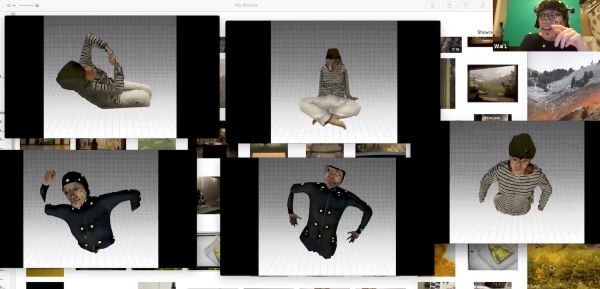
works in progress by Lau Wai
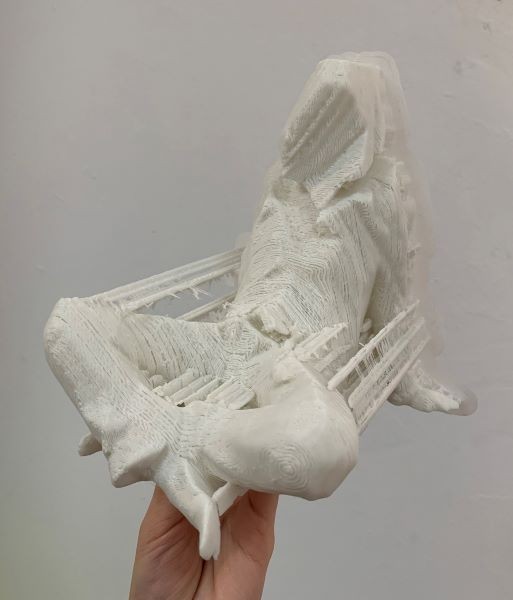
works in progress by Lau Wai
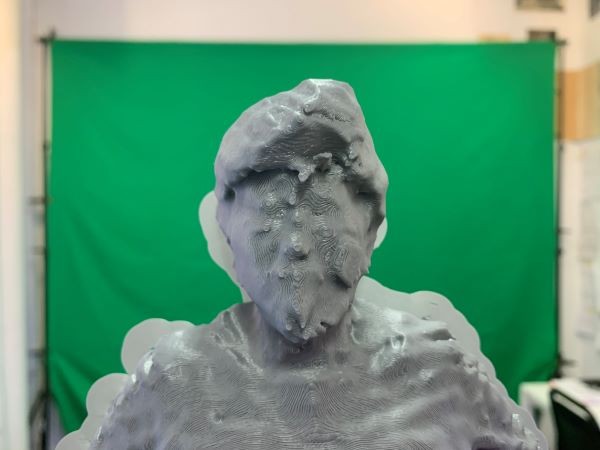
works in progress by Lau Wai
This is such exciting work! I also know that this is a part of your thesis. What else should we look forward to in the thesis exhibition?
LW: Yes! 'I am invincible…. on the screen/ False motion tracking' will be in the show, and I fortunately get the chance to display it also in Hong Kong. Right now though, we still have one more year to work on the exhibition and changes are allowed. I’m also working on a major video piece, which is an extension of I am invincible. Here, I track the life of the “pre-CGI body” and allow it to represent itself. I did a lot of the filming in New York and I am now extending this character in Hong Kong.
I am also developing, working on some 3-D scanning/printing. This holds another form of representation. Here I used a mobile app to scan my complete body, 360 degrees, and it would create a 3-D digital model (header photo). It’s a coproduction of me and the computer as I do not have full control here either. I feed it data, and it gives me models.
I wanted to try out new ways to represent myself that negotiate with pre-existing representations. I sometimes get questions about why I continue to work with things that already exist and I think it’s so important for me to do so because I want to acknowledge the history of stereotypes.
All of these projects are also going to be shown outside of the thesis and are continuous works.
Read more from the "Uncovering the Heritage Silhouette" series
